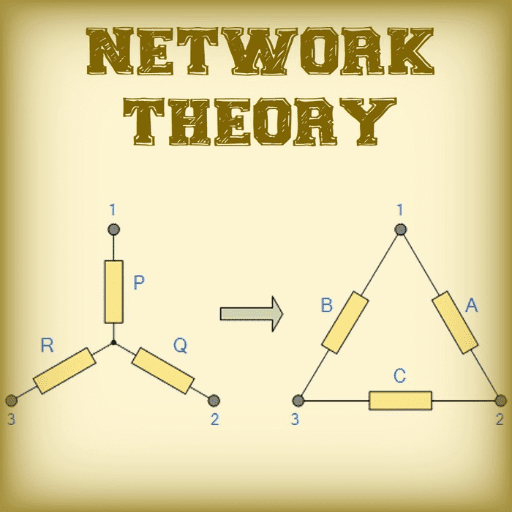Class 9 English Question Answers - The Brook
Read the extracts and answer the following questions.
1. By thirty hills I hurry down,
Or slip between the ridges,
By twenty thorpes, a little town,
And half a hundred bridges.
(a) How does the brook flows through the hills?
Ans. It passes through various hills meeting different odds which affect its smooth movements.
(b) What are the things which come in its way?
Ans. The things which come in its way are flowers, fish, willows, weeds, etc.
(c) What is the brook’s destination?
Ans. Brook’s final destination is a brimming river.
2. I slip, I slide, I gloom, I glance,
Among my skimming swallows,
I make the netted sunbeam dance
Against my sandy shallows.
(a) Why does the poet repeatedly use ‘I’ in the above stanza? What poetic purpose does it serve?
Ans. By repeatedly using ‘I’ the poet has personified the brook to make us tell the struggles it faces during its journey.
(b) What are the various quick movements that the brook makes?
Ans. Sometimes the brook moves gently and sometimes forcefully. It also makes a zigzag movement like a snake.
(c) Give the rhyme scheme of the above stanza.
Ans. The rhyming scheme is abab.
3. I murmur under moon and stars
In brambly wildernesses;
I linger by my shingly bars;
I loiter round my cresses;
(a) The movement of the brook appears to have undergone a change. How?
Ans. It is depicted in the lines above that the brook has slowed down. The poet has used the words 'linger and loiter' to show slow movement.
(b) What effect do ‘moon and stars’ have over the movement of the brook?
Ans. The moon and stars have slowed down the journey of the brook. They make it murmur.
(c) What are ‘cresses’?
Ans. Cresses are the hot-tasting leaves, used for salads.
4. And out again I curve and flow
To join the brimming river,
For men may come and men may go,
But I go on forever.
(a) What is the final destination of the brook?
Ans. The final destination of the brook is the brimming river.
(b) Explain ‘brimming river’.
Ans. Brimming river means the river overflowing with water.
(c) What is the message of the poet?
Ans. The poet compares the journey of the brook with human life with the only difference that human life is mortal, whereas the brook is immortal.
SHORT ANSWER QUESTIONS
1. Give examples of alliteration and the beautiful images that form the texture of the poem ‘The Brook.’
Ans. Sudden sally, bubble babble, twenty thorpes, field and fallow, I slip, I slide, willow-weed are examples of alliteration. The poem forms many beautiful images —
the first one is formed in stanza 2 ‘By thirty hills — a hundred bridges’. This vivid image is of the brook flowing through hills and valleys, under bridges and passing by the
villages.
Another beautiful and strikingly vivid image created by the poet is that of the brook making serpent-like motions slipping, sliding, glancing among meadows, grassy plots, forget me-nots and floating fish.
2. How is the journey of the brook similar to the journey of life and yet different?
Ans. There are various similarities between the brook and the journey of life, e.g., both have a beginning, a middle-age and an end. There are struggles in the lives of both — the human life continues in spite of struggles and ups and downs and the brook continues to flow against all odds. But one thing is different — man is mortal, whereas the brook is eternal, a man may come and man may go but the brook goes on forever.
3. ‘The Brook’ proceeds like a travelogue. Discuss the importance of the various places that the brook encounters on its journey.
Ans. The brook travels through hills and vales, between ridges and underbridges, beside Philip’s farm, fallow land, and foreland, making its way through, with a blossom here and a trout there and many a grayling through obstructions of sand and gravel until it falls into the big river. It passes thirty hills and fifty bridges. It chatters and babbles and creates music as it flows.
4. Describe four movements that the brook makes during its journey. [CBSE 2010 (Term I)]
The various movements that the brook makes on its journey are best described by the poet Lord Tennyson through words like sally, sparkle, slide, move, slip, hurry, flow, go, loiter, linger.
It sparkles as it emerges among the plants with slender leaves, it sparkles in the sunshine among the ferns. It hurries downhills and slips between ridges. It steals by lawns and
slides, by hazel covers, it slips and slides, it glooms and glides and glances. It means it moves gently, slowly, unobserved, smoothly and then comes out into the open.
5. What is the symbolic meaning conveyed by “For men may come and men may go, but I go on forever”? [CBSE 2010 (Term I)]
The brook is a small stream that is born in some mountain. It grows bigger and stronger in the course of its journey. It makes many types of sounds as it flows through the pebbles. Its movements are also varied. It slips and slides; it steals and winds its curves and flows. It chatters and babbles, it makes musical as well as harsh sounds. The brook’s birth and growth, chattering and babbling are very much similar to the activities of a human being. The brook represents life in general. Both have an origin, a middle stage, and an end. Both struggle against various adversities, odds and keep moving towards their goal. Above all, the brook represents life. Men may come and men may go, but life goes on forever. The same rule applies in the case of the brook. It keeps flowing eternally, like life.
6. What does the poet want to convey through the poem, 'The Brook'? [CBSE 2011 (Term I)]
The brook is a symbol of the struggle of human life. The poet wishes to point out that just as ups and downs do not deter the brook from its journey, similarly, human beings should also take the hurdles and sorrows in their stride.
7. Name the different things that can be found floating in the brook. [CBSE 2010 (Term I)]
The brook passes through many hills, ridges, gardens, and valleys. It proceeds on its journey with great force. So it carries many flowers, ferns, pebbles, weeds with its flow.
Many times colourful fish like trout or the grayling can be seen floating in it. When the current is strong, foam gathers on its surface. The brook embraces everything it
encounters with great happiness.
8. What is the message given by the brook? [CBSE 2010 (Term I)]
The poet wants to convey the message by personifying the brook that just as the brook overcomes many hurdles and obstacles in its journey bravely and reaches its final
destination in the same way human beings should also remain undeterred to accept the joys and sorrows of life and face all the obstacles that come in way of their aim,
bravely.
|
119 videos|684 docs|84 tests
|
FAQs on Class 9 English Question Answers - The Brook
| 1. What is the poem 'The Brook' about? |  |
| 2. Who wrote the poem 'The Brook'? |  |
| 3. What is the significance of the brook's journey in the poem? |  |
| 4. What literary devices are used in the poem 'The Brook'? |  |
| 5. What is the theme of the poem 'The Brook'? |  |



























